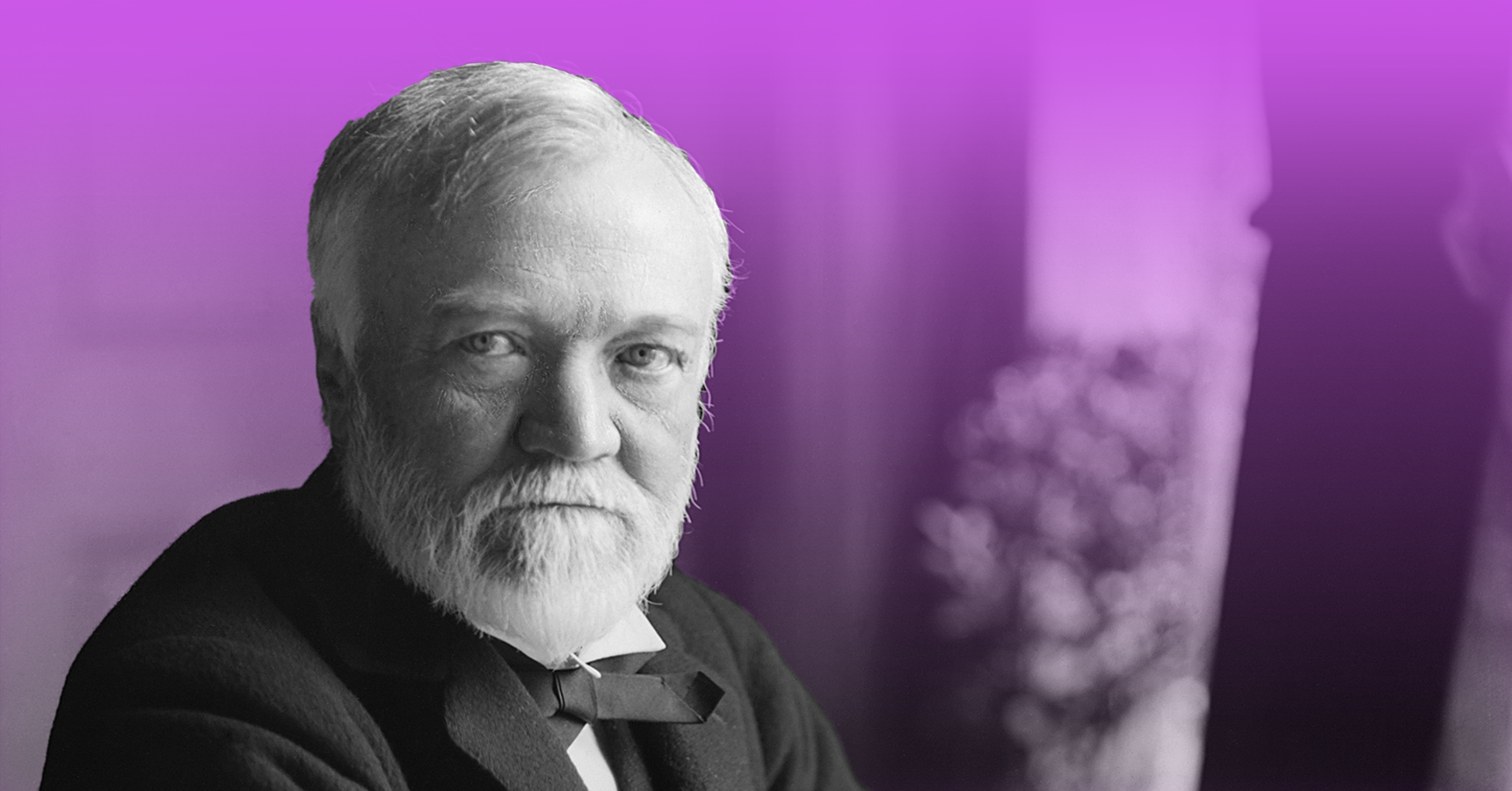Emperor of Oil: The Story of John Rockefeller
Before startups and tech-fuelled scale, the story of wealth was rooted in industry, power, and influence. This story takes us a century back in time, to trace the history of John D Rockefeller, and the glory days of oil.
Thrifty by necessity
Rockefeller was born in Richford, New York (no pun intended) in 1839, the second of five children. One of the wealthiest men in modern history came from modest beginnings, born to a simple homemaker... and a con artist.
Rockefeller's father William sold 'elixirs' posing as a 'botanic physician'. He was away from home a lot, often unfaithful to his wife Eliza, and tried to trick his children to "keep them sharp". Eliza was thrifty by necessity.
Young John learned from both of them.
The family moved around a bit and arrived at Strongsville, Ohio in 1853, and John enrolled at Central High School in Cleveland. He was a quiet and smart child, with a love for music he one day hoped to turn into a career.
Fate had other plans, however.
Beginning as a bookkeeper
Rockefeller decided to take up a 10-week course on bookkeeping at Folsom's Commercial College.
He used the newfound knowledge to get his first job, at age 16, as assistant bookkeeper at a small produce commission firm in Cleveland called Hewitt & Tuttle. The systems and orderliness of the office suited him well, and lessons learned from his father made him particularly astute at negotiating favourable rates with shipping service providers.
His work saw his wages steadily increasing during his time at Hewitt & Tuttle.
Another of Rockefeller's responsibilities was debt collection. Instead of employing forceful tactics, the steadfast young man preferred persistence, wearing people down instead. This would be one of the defining traits in his meteoric rise later in life.
John Rockefeller was a simple young man, but he did reportedly harbour 2 great ambitions.
1. Make $100,000.
2. Live 100 years.
Striking out on his own
After a few years in bookkeeping, Rockefeller teamed up with fellow Folsom classmate Maurice B. Clark to start a produce commission business of his own.
The firm needed $4000 capital. Clark provided half. Rockefeller had only $800.
Out of options, he borrowed the remaining amount from his father Bill Rockefeller, agreeing to pay it back with 10% interest. This readiness to take on debt for business concerns would be another of his defining traits in the future.
His natural skills and knowledge of the business didn't take long to establish themselves, and in two years of being in business, Rockefeller made $17,000 in profit.
Then, the duo got an unexpected tailwind.
The American Civil War.
The demand for supplies helped the partnership prosper massively, but Rockefeller knew it wouldn't last forever. He already had his sights set on another lucrative arena.
Oil.
The era of oil
In the 1860s, electricity was not a concept that was familiar in the average American home. Whale oil had been the primary source for lamps and other needs, but it was progressively getting expensive, and kerosene was the popular refined alternative.
Sensing a business opportunity, Rockefeller and Clark went into the oil refining business, building a refinery in Cleveland's industrial area, popularly known as 'The Flats'. It was owned by Maurice Clark, his two brothers, Rockefeller, and Samuel Andrews — a chemist.
It wouldn't be an exaggeration to say the mid 19th century was a good time to be in the oil business. As the government subsidised oil, refiners were making money hand over fist. Profits were so high that efficiency was the least of their concerns.
But as we know, Rockefeller was a thrifty man.
While competitors wasted large amounts of oil in the extraction process, and dumped most of what could be turned into kerosene and gasoline, Rockefeller focused on optimising everything.
He used the gasoline by product to power the refinery itself, used tar to pave roads, shipped naptha for use in gas plants and even ensured he found markets for other products such as lubricating oil, petroleum jelly, and paraffin wax.
That was only the beginning.
Instead of getting contract workers to lay pipes, Rockefeller hired his own plumbers. Rather than buying oils barrels from the market, he bought wood and had them built. Much later, he would even control prices by adjusting the cost of storage, not of crude itself.
By 1865, Rockefeller bought out the Clark brothers' stake, and a year later, formed a partnership with his brother William Rockefeller Jr, who had also built a refinery in Ohio.
Partnerships and legacies
Now's a good time to introduce Henry Flagler.
When Rockefeller worked at Hewitt & Tuttle, he had served as a commission agent for the Harkness Grain Company, where Flagler worked to repay his half brother Stephen Harkness of debt he acquired following a failed business.
In 1867, much like he had done to start his first partnership, Rockefeller decided to borrow money, and approached Flagler and Harkness. Harkness agreed to become a silent partner, and appointed Flagler to control his interest on his behalf.
These rearrangements led to the creation of the firm Rockefeller, Andrews & Flagler. Just a footnote in the history books. What is not a footnote is what this firm was a precursor to. It's a company you might have heard of.
Standard Oil.
The Harkness family would benefit greatly from Standard's fortunes, as Stephen and Henry's other half-brother Daniel would also become a trustee in Standard Oil, and whose estate would get passed down for generations.
Fun fact: Daniel Harkness' estate passed to Rebekah Harkness, the eccentric widow of his grandson William — along with their beachfront home 'Holiday House'. The house was later bought by singer Taylor Swift, who wrote a song based on Rebekah's life.
The original partnership lasted until Rockefeller abolished it and formed Standard Oil of Ohio in 1870. This began a tale of shrewd negotiations and secret deals, always geared towards 2 things — removing inefficiencies, and protecting Standard's interests.
Rockefeller worked to improve efficiencies of shipments along Pennsylvania railway lines, forming a corporation that worked with railway operators to optimise traffic. This also gave Standard and contemporaries favourable rebates, while charging other companies more. Rockefeller's negotiations came out in the open and public outcry led to the corporation being dismantled, though his efforts had led to customers getting access to kerosene cheaply.
He persevered, always remaining a step ahead of the competition. Under Rockefeller's leadership, Standard grew from strength to strength.
In a four month span in 1872, the company absorbed 22 of its 26 competitors in Cleveland. This event is often dubbed the 'Cleveland Conquest' by some.
Others call it the 'Cleveland Massacre'.
A history in grey
The story of Standard Oil is a chequered one. On the one hand, the company completely disrupted oil, owning everything from production to supply chain and making business out of every possible byproduct.
As the 1870s drew to a close, 90% of US oil was refined by Standard.
On the flip side, Rockefeller artificially kept prices low and used Standard's leverage and lobbying power to undercut competitors. Over time, he would reportedly just show competitors his books, proving they could not win against him and turn detractors into partners.
The 1880s saw Standard reach its peak, with 20,000 domestic wells, 4,000 miles of pipeline, and over 100,000 employees. It was refining over 90% of the *world's* oil. Rockefeller also issued certificates for oil in Standard's pipeline, giving rise to oil futures.
The curse of monopoly
By the mid 1880s, America's monopoly on oil began to dwindle as oil wells in Russia and Asia began to supply the world. Standard's status as a monopoly was also coming under pressure, with regulatory agencies beginning to crack down on the company.
In 1892, Ohio used its state antitrust laws to break up Standard Oil of Ohio from the rest of the Standard Oil Trust — which had been carefully incorporated to allow rapid business expansion. This was the beginning of the end for the Standard Oil empire.
By the 1890s, Rockefeller began acquiring more wells and forayed into iron, putting him on a collision course with steel magnate Andrew Carnegie. The embattled Rockefeller got some respite when his son, John Jr, joined his company in 1897.
Now entering his sixties and beginning to suffer health issues, Rockefeller began considering retirement, taking up more leisure activities. By 1901, John Pierpont Morgan, who had acquired Carnegie's steel assets, picked up Standard's iron interests in a stock deal.
Related Read:

Rockefeller retired in 1902, at the age of 63, having made over $50 million on his investments. He continued as President of Standard, but his public image also continued to suffer, aided by Ida Tarbell's 1904 book chronicling the story of Standard Oil.
By 1911, the US Supreme Court ruled Standard Oil to be an illegal monopoly in violation of the Sherman Antitrust Act, and ordered it to be broken up into 34 companies.
It was the end of an era.
Electricity was now replacing oil in homes, but the oil industry was serving new sectors like transportation. The companies that emerged from Standard's ashes are global giants today — ExxonMobil and Chevron, to name a few.
Standard Oil was gone, but this move only increased Rockefeller's fortune. Ever the thrifty man, he had rarely liquidated stock, and held a significant amount of Standard stock, which made him a key stakeholder in 34 new companies in a still lucrative business.
Retirement and reflections on wealth
In his later years, Rockefeller doubled down on the Christian ideals of giving that had stayed with him throughout his life as a titan of industry. He invested heavily in education and healthcare, helping set up universities and hospitals.
His philanthropic efforts in medicine are widely hailed as having curbed hookworm and yellow fever in the US, restoring his public image somewhat.
As an old man known for his immense wealth, he reportedly gave dimes and nickels to adults and children respectively.
On May 23, 1937, John Rockefeller passed away at his home in Florida. He was almost 98.
Many years prior, a young man had dreamed of making $100,000 and living 100 years.
It's safe to say he achieved what he set out to do.
Rockefeller's legacy is a multifaceted one, equal parts a man with a good heart trying to make the best decision when there were no 'right' ones, and one who would do anything to win. Perhaps it is impossible to be a pioneer and emerge with your reputation intact.
If you enjoyed this read on John Rockefeller, please share it with others who might as well. ✌
Yodaa is a smart money app and card for the entire family. Join the club of the smartest financially empowered teens in India and SE Asia. Get Yodaa today.




